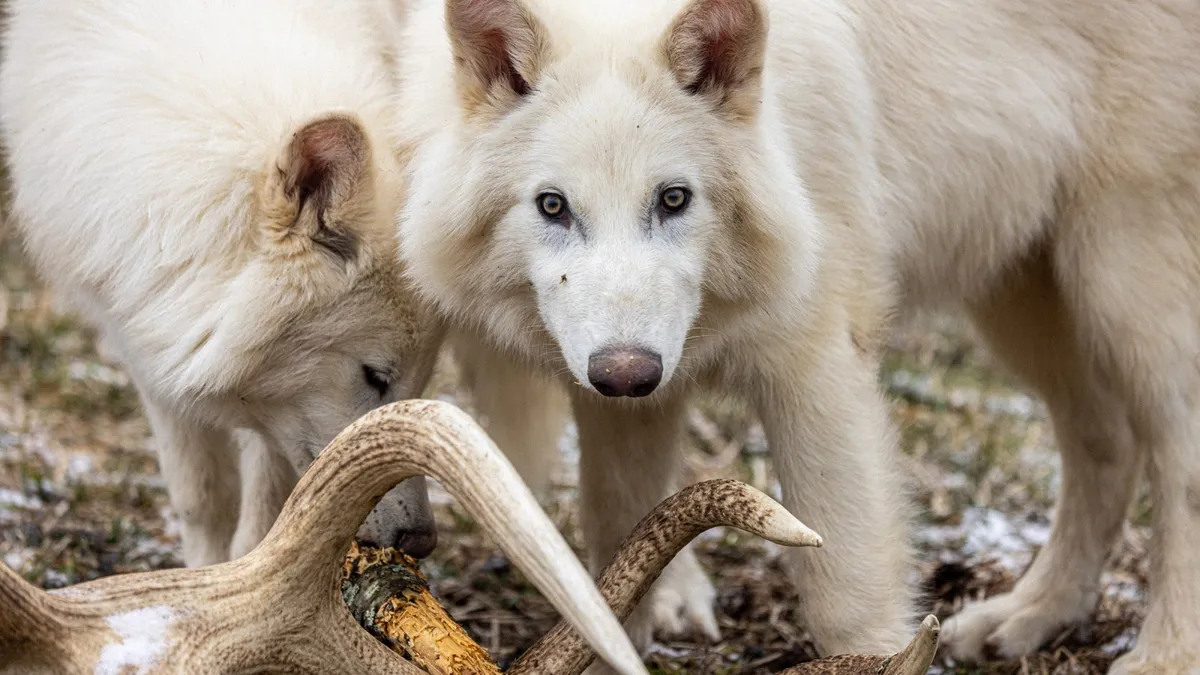
In a fascinating video call, a group of white canids can be seen playfully chewing on branches amongst the grass. From certain angles, they resemble Samoyeds, with their huge, fluffy white faces and big black noses. However, as they lower their gaze, their long, pointed snouts become visible, hinting at their true identity as dire wolf pups, returning from extinction after approximately 12,000 years. With their big golden eyes strategically positioned for hunting, these incredible creatures are not your average domestic dogs or even modern-day wolves.
Many people associate the term "dire wolf" solely with the lore of Game of Thrones, but as George R. R. Martin himself points out, the dire wolf was indeed a real creature, an apex predator of the Ice Age. The modern dire wolf pups, named Romulus, Remus, and a younger sibling, Khaleesi, are a product of Colossal, a bioscience startup founded in 2021. This innovative company is known for its ambitious efforts to bring back ancient species, including the woolly mammoth. However, it is the dire wolf project that has gained significant traction due to the wealth of genetic information available about dogs compared to elephants.
Co-founded by entrepreneur Ben Lamm and geneticist George Church, Colossal aims to employ CRISPR gene-editing technology not only to resurrect prehistoric creatures but also to aid in the conservation of species currently threatened with extinction. According to Lamm, their mission is crucial in the context of the ongoing sixth mass extinction, which is largely human-induced. “While there’s different perspectives around human-caused climate change, I think everyone understands that if we overfish the oceans, there’s less fish,” he emphasizes, advocating for broader awareness of environmental issues.
During the Pleistocene Epoch, dire wolves thrived in packs across what we now know as the Americas. They stood between 3.4 and 3.8 feet tall, significantly larger than the average gray wolf, which typically measures around 2.5 feet. Known to hunt large prey such as bison and horses, dire wolves became extinct around 10,000 BCE, likely due to food shortages caused by global warming. The first fossils were discovered in the 1850s, leading to the species being scientifically named Canis Dirus, which translates to "terrible wolf."
Colossal's ambitious project to bring back the dire wolf involves advanced scientific techniques. Led by chief science officer Beth Shapiro, the team extracted DNA from a 13,000-year-old tooth and a 72,000-year-old inner ear bone, utilizing sequencing machines to reconstruct the dire wolf's genome. Shapiro likens the process to solving a "trillion-piece puzzle," highlighting the complexities of accurately recreating the genome of a long-extinct species. While it is impossible to make the new dire wolves 100% genetically identical to their prehistoric ancestors, the goal is to create a functional equivalent that can thrive in today’s environment.
With the dire wolf project, Colossal is navigating between the realms of science fiction and reality. The pups, Romulus and Remus, were born on October 1, 2024, via scheduled C-section to their surrogate mothers on a secure 2,000-acre preserve in the United States. This fenced-in area provides the necessary space and environmental conditions for the pups to grow. According to Matt James, Colossal’s chief animal officer, the first howls from the pups were a monumental moment, marking the first time in 12,000 years that this species has vocalized in the wild.
Despite the excitement surrounding the return of the dire wolves, Colossal has no plans to release them into the wild. The primary concern is to keep these animals safe from potential conflicts with humans and livestock. “The goal is not to release dire wolves into the wild where they will compete with gray wolves,” Shapiro states. Instead, they aim to create expansive ecological preserves, potentially on indigenous land, to honor the cultural significance of wolves.
Moreover, Colossal's commitment to conservation extends beyond just resurrecting dire wolves. The company has cloned four endangered red wolves using innovative cloning technology designed to be less invasive. This effort aims to increase the population of one of the world's most endangered wolf species, showcasing the company’s dedication to wildlife conservation and ecological sustainability.
The intersection of science and imagination generated by Colossal’s work resonates deeply with fans of the Game of Thrones franchise. As Martin himself expressed, meeting the dire wolf pups was an emotional experience, a dream come true. “I never imagined I would ever actually see a dire wolf,” he said. The revival of these magnificent creatures not only captures the fascination of the public but also serves as a poignant reminder of the wonders of nature and the importance of conservation.
As Colossal continues its groundbreaking work, the hope is that the return of ancient species like the dire wolf will inspire a new generation to appreciate and protect the incredible biodiversity of our planet. With their sights set on both the past and the future, Colossal is paving the way for innovations that could change the course of wildlife conservation and reshape our understanding of extinction and resilience.